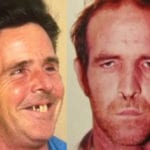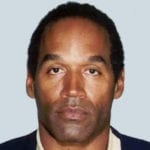 Movies and TV
Movies and TV  Movies and TV
Movies and TV  History
History 10 Things You Never Knew About Presidential First Ladies
 Movies and TV
Movies and TV 10 Zombie Movies That Will Actually Terrify You
 Humans
Humans 10 Times Scientists Were Absolutely Sure… and Absolutely Wrong
 Our World
Our World 10 Pivotal Moments for Life on Earth
 Movies and TV
Movies and TV 10 Most Realistic Medical TV Shows of All Time
 Creepy
Creepy 10 Eerie & Mysterious Ghosts of the Pacific Coast
 Weird Stuff
Weird Stuff 10 Typos That Accidentally Changed History
 History
History 10 Times Trickery Won Battles
 Technology
Technology 10 Awesome Upgrades to Common Household Items
 Movies and TV
Movies and TV 10 Movie Flops That Found Their Way to Cult Classic Status
 History
History 10 Things You Never Knew About Presidential First Ladies
 Movies and TV
Movies and TV 10 Zombie Movies That Will Actually Terrify You
Who's Behind Listverse?

Jamie Frater
Head Editor
Jamie founded Listverse due to an insatiable desire to share fascinating, obscure, and bizarre facts. He has been a guest speaker on numerous national radio and television stations and is a five time published author.
More About Us Humans
Humans 10 Times Scientists Were Absolutely Sure… and Absolutely Wrong
 Our World
Our World 10 Pivotal Moments for Life on Earth
 Movies and TV
Movies and TV 10 Most Realistic Medical TV Shows of All Time
 Creepy
Creepy 10 Eerie & Mysterious Ghosts of the Pacific Coast
 Weird Stuff
Weird Stuff 10 Typos That Accidentally Changed History
 History
History 10 Times Trickery Won Battles
 Technology
Technology 10 Awesome Upgrades to Common Household Items
Ten Twisted & Sinister Fates of Presidents’ Remains after Death
It seems obvious that a former president should be given an appropriate and honorable final resting place. For most who have served their country, that has been true. But there have also been a surprising number of issues with former leaders’ deaths. From George Washington to the present day, presidents have been memorialized in some strange ways. Worse still, some of their remains haven’t been allowed to rest as they should.
Here are ten tales of the strange fates of former presidents after death.
Related: Top 10 Faux Pas Committed By US Presidents
10 George Washington
When George Washington died in 1799, his will was clear: He wanted to be buried close to his Virginia home. But the mausoleum at his plantation, Mount Vernon, needed considerable renovation to hold the first President’s remains. Prior to his death, Washington himself laid out the issue. He wrote about repairs that had to be done to the vault: “I desire that a new [tomb] of Brick, and upon a larger Scale, may be built at the foot of what is commonly called the Vineyard Inclosure… In which my remains, with those of my deceased relatives… may be deposited.”
Unfortunately, that didn’t happen. Congress ignored his request and conspired to erect a crypt in the U.S. Capitol building. But by 1830, three decades after Washington’s death, that memorial hadn’t been built. Washington’s remains were still in Mount Vernon—but no renovation had been done on the vault there, either.
That’s when things got strange. That year, Washington’s nephew and last surviving heir, John Augustine Washington II, fired a gardener who had been employed at Mount Vernon. The landscaper was upset about the dismissal and sought revenge. He crept into the crypt with the intention of stealing the late president’s skull. Thankfully, Washington’s body had been encased in lead to prevent post-death tampering. Even so, the crypt was in such bad shape that the bones of dozens of people were scattered and mixed together inside. Instead of taking a piece of Washington, the gardener swiped the skull of one of his distant relatives. A year later, the surviving Washington heir erected a new crypt to honor the president, and—pardon the pun—the rest is history.[1]
9 James K. Polk
James K. Polk died only a few months after his term ended in 1849. The nation’s 11th President died of cholera, which at the time meant a quick burial in a mass grave to slow the disease’s aggressive spread. That burial was unbecoming for a former president, though. After a year in a common grave in a city cemetery in Nashville, lawmakers in Tennessee ordered the remains moved. The intended final resting spot was to be Polk Place, where the president died. And for a while, that was that. But in 1893, the Polk family sold the expansive property. When that happened, Tennessee officials moved Polk’s remains to the State Capitol in Nashville—and again, for a while, that was that.
In 2017, Polk’s final resting place came back into question. At issue this time was the late president’s last will and testament. In the document, he requested to be buried at Polk Place. That property was demolished not long after his family sold it back in 1893, though. So state lawmakers began the process of moving the remains to a property in the city of Columbia, an hour outside Nashville.
Polk had also owned that home during his life, and politicians reasoned the move would essentially fulfill the request in his will. In 2018, the Tennessee legislature passed a resolution to move Polk yet again. However, six months later, it was put on hold when the Tennessee Historical Commission refused to grant permission to disturb the remains. Today, Polk rests at the State Capitol Building—for now.[2]
8 Zachary Taylor
Not long after Polk’s death, his successor died. Zachary Taylor had the unfortunate distinction of dying in office when he perished a year into his term in 1850. He was 65 years old upon death, which was an advanced age at the time. However, just days before passing, he was in good spirits at a Fourth of July ceremony. The sudden death left supporters wondering if he was poisoned. Taylor had been strongly against allowing slavery in the west at the time. Thus, his supporters wondered whether pro-slavery insurgents poisoned the milk and cherries he ate on the Fourth of July. But no definitive proof of poisoning was ever revealed.
Taylor was buried in his home state of Kentucky. For a while, he rested peacefully. But over the next century, the possibility of poisoning continued to be debated. In 1991, the former President was exhumed for an autopsy. Kentucky’s chief medical examiner performed the procedure. He conclusively found Taylor had not been poisoned. In his report, the death doc wrote Taylor died of “a myriad of natural diseases which could have produced the symptoms of gastroenteritis.” Satisfied at the conclusion, 140 years later, lawmakers had Taylor reburied. Today, he rests in the National Cemetery that bears his name in Louisville.[3]
7 John Tyler
John Tyler was America’s tenth President, serving before Polk. The Southerner died in 1862, during the middle of the Civil War. He had been elected to the insurgent Confederacy’s legislature in his final days. Thus, rebels held the Virginia native’s body on their side of the horrifically bloody war. This riled up men on both fronts of the conflict and altered how Tyler’s final resting place was designated. The write-up of Tyler’s passing in The New York Times was vicious, asserting he went “down to death amid the ruins of his native State.” The obituary continued: “[Tyler] himself was one of the architects of its ruin; and beneath that melancholy wreck his name will be buried, instead of being inscribed on the Capitol’s monumental marble, as a year ago he so much desired.”
That obituary writer would be proven correct. Tyler had requested a simple funeral at Hollywood Cemetery in Richmond, Virgina. That did not happen. Seeing an opportunity to promote rebel pride, Confederate President Jefferson Davis threw a “grand event” for Tyler. Davis even draped Tyler’s coffin in a Confederate flag. In response, Union lawmakers refused to acknowledge the former president’s resting place. Today, Tyler is still interred in Richmond. The old bitterness has carried on, too. According to cemetery officials, he is still the only former president whose resting place is not recognized in Washington.[4]
6 Abraham Lincoln
After Abraham Lincoln’s 1865 assassination, his body was taken by train around the country. Millions of Americans mourned their murdered leader. The body was embalmed for the trip—a relatively new procedure at the time. It hadn’t been perfected yet, though. The 19-day rail journey required morticians to travel with Lincoln’s corpse and re-embalm it at every stop. However, the experts were unable to prevent the corpse’s ultimate decay. When the train stopped in New York, a reporter wrote: “It will not be possible, despite the effection of the embalming, to continue much longer the exhibition, as the constant shaking of the body aided by the exposure to the air, and the increasing of dust, has already undone much of the… workmanship.” Thankfully, after three weeks, Lincoln was finally laid to rest in an Illinois tomb.
A decade later, in 1876, a group of criminals devised a plan to steal Lincoln’s remains and hold them for ransom. There were no guards at the late president’s tomb, and the marble sarcophagus serving as his resting place had only been lightly sealed. Unbeknownst to the group, they revealed their scheme to a man who was a government informant. He told the Secret Service, and on the day the crew went to the tomb, officers were waiting. Following that near-theft, Lincoln’s remains were secretly buried in the vault’s basement. In 1901, he was disinterred once more and reburied inside a steel cage under ten feet of concrete.[5]
5 Warren G. Harding
Warren G. Harding suddenly died at a San Francisco hotel in 1923. At the time, he was in the midst of a nationwide speaking tour. He’d also recently suffered food poisoning. But nobody expected him to pass without warning. His wife, Florence, was adamant about the aftermath: no autopsy and immediate embalming. Harding’s doctors were furious. They wanted to know what had suddenly killed the sitting President. One frustrated medical professional even wrote: “We shall never know exactly the immediate cause of President Harding’s death since every effort that was made to secure an autopsy met with complete and final refusal.” The grieving widow was unmoved, though, and her late husband was buried.
For a while, the public blamed Harding’s doctors for his death. But a few years later, the truth started to come out. In 1928, a woman named Nan Britton wrote a tell-all book about an alleged affair she had with Harding. And in 1930, a former administration staffer wrote a book alleging Florence poisoned her husband after learning of the infidelity. Then, almost a century later, Britton’s descendants wanted answers about their lineage. Ancestry documentation linked them to Harding, and they took the late president’s offspring to court over it. Before Harding’s body could be exhumed for DNA proof, though, his progeny relented. They admitted Harding did indeed have an affair with Britton that produced a child.[6]
4 Franklin D. Roosevelt
Franklin D. Roosevelt was one of America’s greatest presidents. He saw the country through a bit more than three terms spanning much of the Great Depression and World War II. When he died in 1945, he had been very sick for a very long time. Still, his death was not expected. Roosevelt had been at one of his vacation homes with an alleged mistress when he perished. He told her he felt “a terrific pain in the back of my head” and passed out. Three hours later, he was dead. But while officials knew the importance of embalming quickly after death, their response was slow. An undertaker wasn’t contacted until four hours after the president’s death. All the while, aides waited on Eleanor Roosevelt to arrive as the next of kin.
Nine hours later, the embalming process finally began. The undertaker, F. Haden Snoderly, recorded a detailed 15-page memo about the significant issues he faced at that point. “Rigor mortis had set in,” he wrote, and Roosevelt’s abdomen had been “noticeably distended” by the time embalming began. Worse still, FDR’s “arteries were sclerotic,” which meant it was nearly impossible for Snoderly to get embalming fluid into the great man’s veins. The process was so difficult that accusations later appeared in books that Roosevelt had been poisoned and his body had turned black upon death. Those claims were false, but rumors persisted. As for FDR’s afterlife, the president wanted to keep things simple. He wrote out a very detailed set of instructions demanding a bare-bones coffin, a low-key funeral, and no lying in state.[7]
3 John F. Kennedy
John F. Kennedy’s body rests in the Arlington National Cemetery. His brain, however, is missing. Kennedy was assassinated in 1963. During the autopsy, his brain was placed in “a stainless-steel container with a screw-top lid.” Secret Service agents stored it in a secured file cabinet for safekeeping. From there, it was later brought to a “secure room” within the National Archives. But then something horrible happened. Three years after Kennedy’s death, officials discovered the late President’s brain had vanished. But nobody knew when or how it had been removed from the National Archives.
Author James Swanson reported on the macabre caper in the book End Of Days, writing: “the brain, the tissue slides, and other autopsy materials were missing—and they have never been seen since.” There is no shortage of conspiracy theories focused on Kennedy’s death, but his missing brain has only added to the lore. Swanson played right into it with his own theory too. The author claimed JFK’s brother Robert F. Kennedy was the one who swiped the organ. “My conclusion is that Robert Kennedy did take his brother’s brain—not to conceal evidence of a conspiracy but perhaps to conceal evidence of the true extent of President Kennedy’s illnesses,” Swanson wrote, “or perhaps to conceal evidence of the number of medications that President Kennedy was taking.”[8]
2 Tassos Papadopoulos
Tassos Papadopoulos, the former President of Cyprus, succumbed to lung cancer in 2008. Papadopoulos had been a political hero in the island nation. After his death, his body was interred in a cemetery in the city of Nicosia. But on the day before the first anniversary of his passing, the remains were stolen. On the morning of December 11, 2009, one of Papadopoulos’s former bodyguards went to the gravesite to light a candle of remembrance. It had rained hard the night before. When the mourning man arrived, he found an empty hole and a pile of dirt where the grave had been. The shocked man immediately called the police.
Officials were baffled by the heist. For weeks, they failed to determine any suspects. Then, three months later, an anonymous tip led police to a different cemetery in Nicosia. There, they found Papadopoulos’s body reburied in another grave. The tip gave investigators a lead, too. It turned out the late president’s body had been dug up by a man seeking leverage to ask for his brother’s release from prison. The scheme came apart after another accomplice called Papadopolous’s family and asked for money instead. The grave robbers were caught and quickly punished. Each man received less than two years in jail for the crime. Thankfully, Papadopoulos was reburied peacefully.[9]
1 José Eduardo dos Santos
When José Eduardo dos Santos died in early July 2022, it kicked off a series of tense exchanges. Dos Santos had ruled over Angola for decades after taking power in 1979. During that time, his regime oversaw a brutal civil war. He died in Spain, thousands of miles away from his political opponents. But the geography and timing were both tough: Angola was on the eve of an already-tense election campaign when dos Santos succumbed in Barcelona.
His daughter openly claimed foul play had felled the 79-year-old man. She demanded an autopsy in Spain to determine his cause of death. The autopsy was performed, but the evidence of misdeed was not there. Certain of an unsuspicious death, a Spanish judge ruled weeks later that dos Santos was not the victim of foul play. The judge also ordered dos Santos’s body be released to his widow, Ana Paula, and not his children. The grieving wife flew it back to his homeland days before the August elections.
The current Angolan government protested that choice but eventually allowed it. Longtime supporters met the late president’s casket at the airport in Luanda and mourned as it traveled through the city. Finally, in August, dos Santos was laid to rest in the capital “after a long waiting period.”[10]








